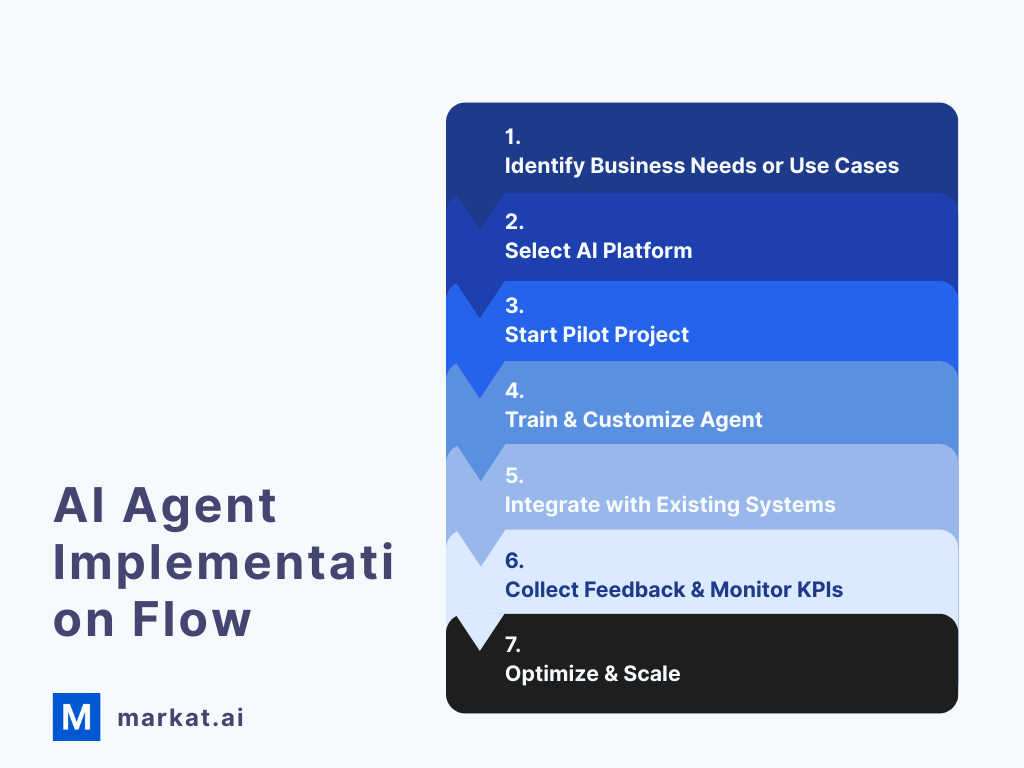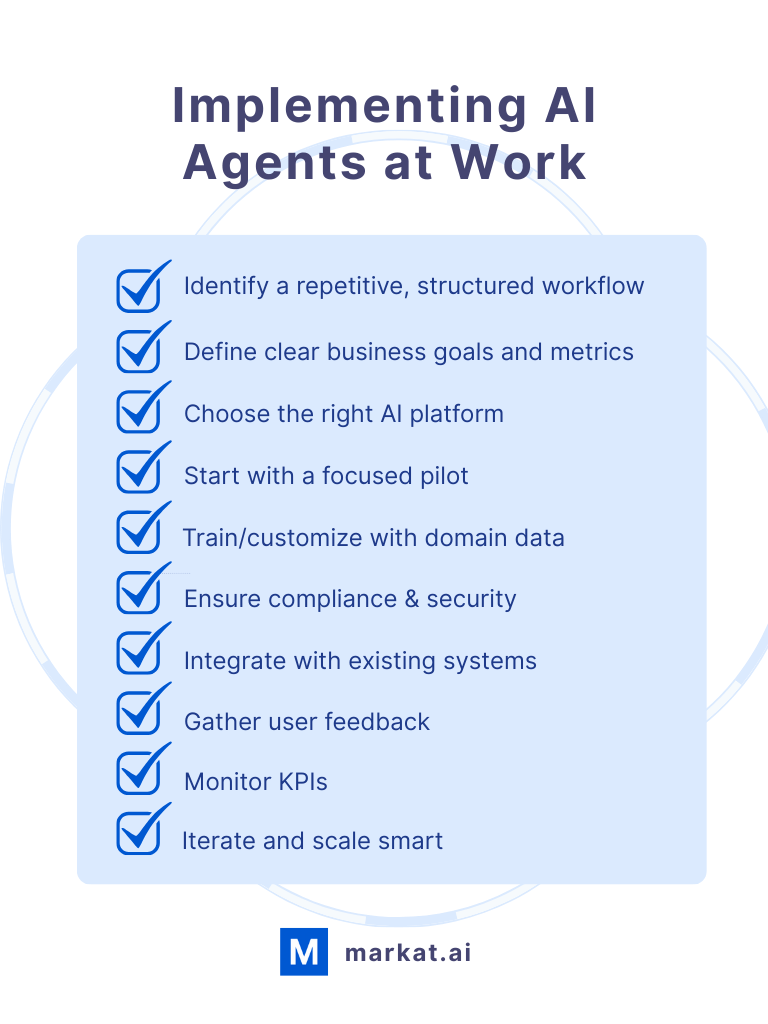Introduction
Implementing AI agents is not about flipping a switch. It is about following a clear process that takes you from testing to results without wasting time or budget.
For small and mid-sized businesses, this matters now more than ever. AI agents are not just for big enterprises. They can save hours on admin, reduce costly mistakes, and give your team back time for the work that really drives growth.
This playbook breaks down how to implement AI agents step by step, with real examples you can apply today.
Why SMBs Should Care
AI agents are no longer experimental. Used correctly, they can:
- Save time on repetitive reporting and data entry.
- Cut costs by reducing manual admin.
- Improve service with faster, more consistent workflows.
- Give small teams leverage. You do not need the headcount of a big competitor if your processes are tighter and smarter.
If you are still relying only on AI tools for single tasks, you are missing out. Agents go further. They can carry work through entire workflows.
Step-by-Step: How to Implement AI Agents

1. Define the Right Use Case
Start small and focused. The best agents automate repetitive, rule-based tasks that eat up time.
- In healthcare, that might mean generating structured patient summaries after each consultation, freeing medical staff from hours of manual reporting.
- In architectural engineering, an agent could assemble compliance reports or consolidate planning documents across multiple stakeholders and platforms.
Pick a process that is structured, time-consuming, and high-volume. That is where agents shine. I have seen too many teams burn budget trying to automate chaos. If the process is broken, an agent will only make it worse. Fix the workflow first.
2. Choose the Right Platform
Not all platforms are built for the same thing. Some are no-code and ready for SMBs, others require developers. Match the platform to your workflow and team skills.
See our full guide: Best Platforms to Develop AI Agents.
3. Pilot with a Narrow Scope
Do not roll out company-wide on day one. Test with a single workflow, one department, or a handful of users.
This keeps risk low and learning high.
4. Measure Real Outcomes
A demo means nothing if you cannot prove value. Measure against hard outcomes:
- In healthcare, does the agent cut patient documentation prep from two hours to twenty minutes?
- In engineering, does it reduce errors or delays in compliance reports that otherwise stall approvals?
If yes, you have proof it is worth scaling.
5. Integrate Into Existing Systems
The best AI agents do not sit on an island. They connect with your CRM, ERP, or reporting tools.
If integration is clunky or requires constant manual fixes, adoption will stall.
6. Train Your Team
Even the best agent fails if your team does not trust it. Show them what it does, what it does not do, and how it fits into their workflow.
Team adoption is a human problem, not a technical one.
7. Iterate and Expand
Agents are not set and forget. Use feedback loops to improve performance, fix gaps, and expand into new areas.
Start with one workflow. Add more only once you have proven results.
Pilot vs Full Deployment
| Aspect | Pilot | Full Deployment |
|---|---|---|
| Scope | One workflow | Multiple workflows |
| Cost | Low | Higher upfront |
| Risk | Contained | Broader impact |
| Speed | Fast | Slower, but scalable |
| Best For | Testing value | Scaling proven agents |
Common Challenges (and How to Avoid Them)
- Wrong workflow: Do not start with vague, messy processes. Automating confusion just gives you faster confusion.
- Weak integration: If it does not connect with your systems, it will not last.
- No success metrics: “It feels useful” is not proof. Track time, errors, or costs.
- Team resistance: If people do not trust it, they will not use it.
Checklist Before You Roll Out
- The workflow is repetitive and structured.
- Data is clean enough for automation.
- Success metrics are clear.
- A pilot owner is assigned.
- Feedback loops are in place.
If you cannot check these boxes, you are not ready to scale.
Where Markat.ai Fits
At Markat.ai, we are building a marketplace for AI agents and tools where SMBs can:
- Test agents in real-world workflows.
- Validate results before scaling.
- Give feedback to developers for improvements.
- Access solutions built for real problems, not just demos.
This helps you find what actually works.

FAQ
How long does it take to implement an AI agent?
A pilot can be live in days. Full rollout usually takes weeks, depending on integration needs.
Do I need developers?
Not always. No-code platforms work well for SMBs, though complex workflows may require technical help.
Can SMBs really afford this?
Yes. Starting with pilots keeps costs low, and proven agents pay for themselves in saved time and reduced errors.
Conclusion
Implementing AI agents does not have to be complicated. Start small, measure real outcomes, train your team, and scale only what works.
The companies I have seen succeed are the ones that start small, measure honestly, and scale only when it makes sense. That discipline is what turns AI from a demo into real business value.
At Markat.ai, we are building a marketplace to make that journey easier. A place to test, validate, and adopt agents that actually work for your business.


Leave a Reply